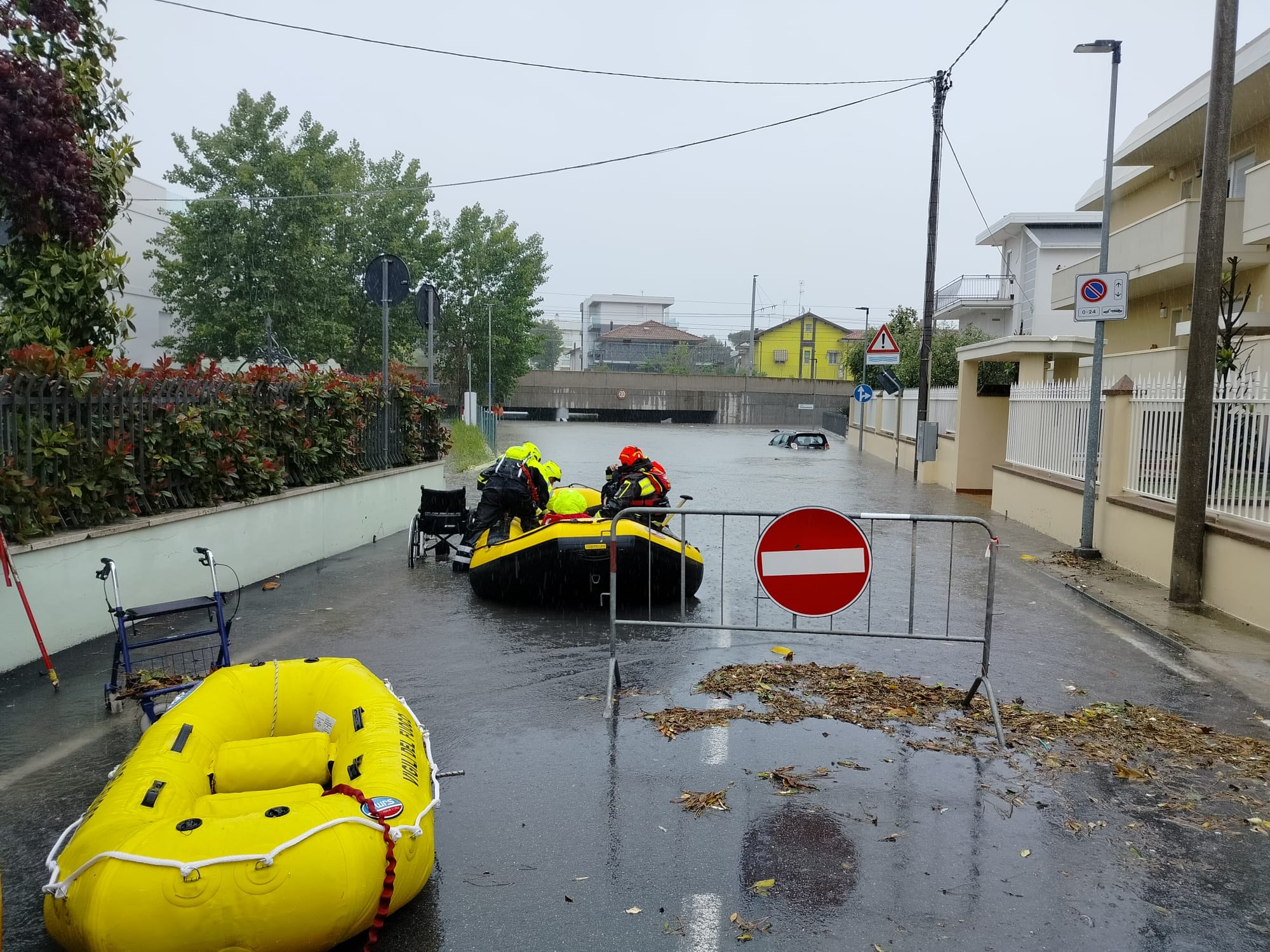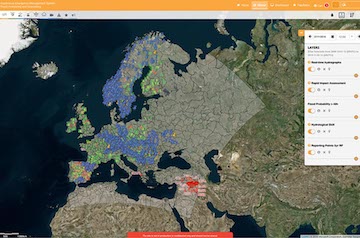
Devastating flooding impacted wide areas of the North Italian region of Emilia-Romagna in May 2023.
Following a period of drought, heavy rainfall on 02 May 2023 triggered flooding and landslides in several provinces, in particular Bologna, Ravenna and Forlì-Cesena.
The weather station at Botteghino di Zocca in the Metropolitan City of Bologna recorded 198.2 mm of rain. Levels of the Lamone River near Pieve Cesato in the Province of Ravenna, jumped by over 10 metres in less than 24 hours.
Teams from Vigil del Fuoco, Italy’s fire and rescue service, carried out rescues by boat and helicopter. Hundreds of people evacuated their homes. Vigil del Fuoco confirmed one fatality in a landslide in Fontanelice in Bologna Province. Another person died in the floodwaters of the overflowing Senio River in Castel Bolognese, Province of Ravenna.

The Copernicus Emergency Management Service produced maps for flooded areas in Bagnacavallo, Fontanelice, Idice-Mollinella, Lamone-Faenza, Modigliana, Pianoro, and Spazzate-Sassatelli.
The region saw further rainfall on 10 May and again on 16 May, by which time rivers were swollen and the ground heavily saturated. The weather station at Modigliana, Province of Forlì-Cesena, recorded 190.2 mm of rain in 24 hours on 16 May. Brisighella in the Province of Ravenna saw 184.2 mm during the same period.
The rain on 16 May triggered dramatic and widespread flooding in the region. By 17 May, over twenty rivers and streams have broken their banks, causing flooding in 37 municipalities, in particular in the Provinces of Bologna, Ravenna, Forli-Cesena, and Rimini. Authorities also reported hundreds of landslides.
As of 20 May, more than 36,600 people had been displaced from their homes, including 27,775 in Ravenna, 4,830 in the province of Forlì-Cesena, and 4,012 in the Bologna area, according to the regional government. Fifteen fatalities were reported.
The Copernicus Emergency Management Service produced maps for flooded areas of Forli, Lugo, Castel Bolognese, Faenza, Cesena, Budrio, Ravenna, and Montalbano.

Irene Priolo, Vice-president of the Emilia-Romagna Region with responsibility for civil protection, said in a statement on 24 May that 350 million cubic meters of water had fallen in the region in May, triggering 23 rivers to flood and 1,000 landslides, affecting 100 municipalities.
The Vice-president described the situation as an “epochal event, which has no equal in the whole of the country.”
The dramatic impacts of the flooding led to speculation of the role played by climate change. On 31 May the World Weather Attribution issued findings of their report showing a limited net role for climate change in heavy spring rainfall in Emilia-Romagna.

